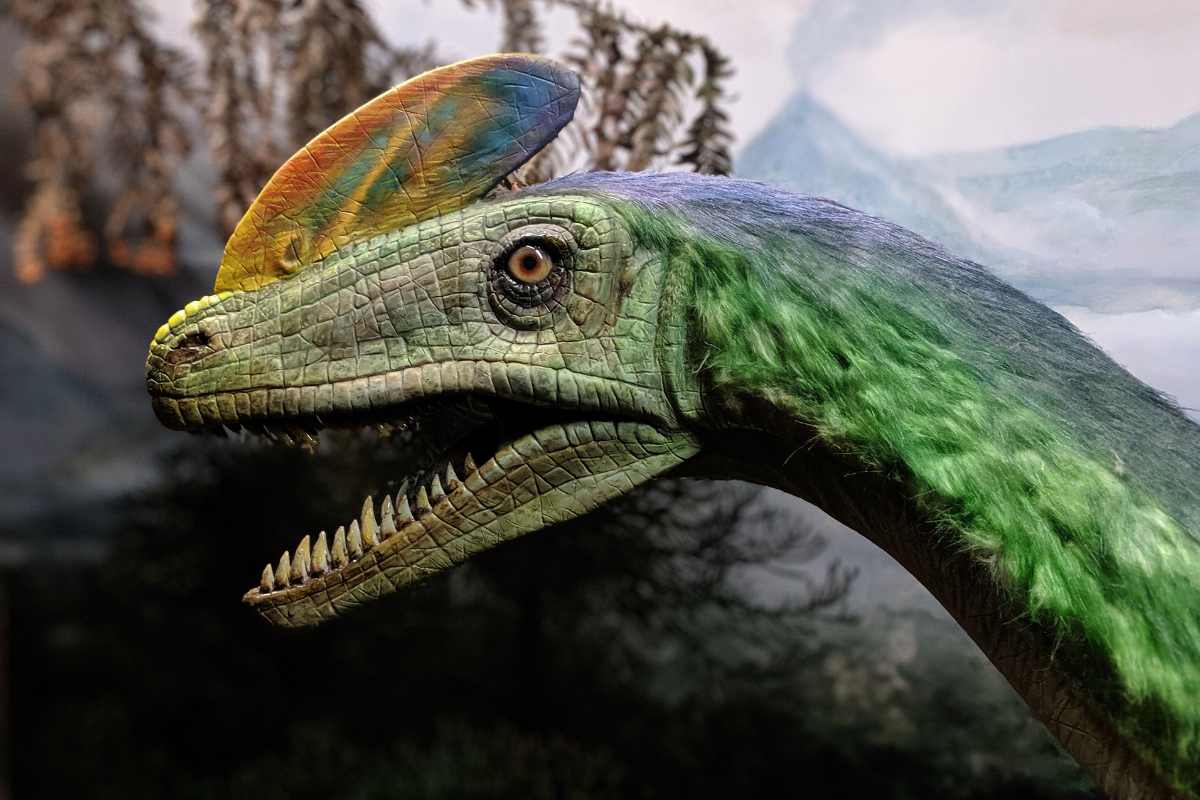
With impressive bright colors they managed to seduce partners, just like birds still do today.
In the meantime, many dinosaur bones have already been found. Some are so well preserved that researchers have also been able to make out their appearance. For example, it is known that there were feathered specimens, but also scaly and horned ones. In some cases we even know what color a particular dinosaur was. In a new study researchers make another interesting discovery. Because according to them, there is a good chance that some dinosaurs even had brightly colored body parts.
Bright colors
Scientists have suspected for some time that there is a connection between dinosaurs and modern-day birds. And when we look at birds, something stands out. Except for parrots and peacocks, most may not have such colorful and showy plumage. But if you look beyond the feathers, bright colors on birds are not hard to find. Just think of pink pigeon feet, red mohawks and the beautiful orange-yellow beak of the toucan. “Today’s birds can have brightly colored beaks and legs,” said study researcher Sarah Davis. “And possibly dinosaurs had that too.”
You might not think it, but many birds have beautiful colors. For example, the researchers find in their study that 54 percent of the 4,022 studied bird species are brightly colored somewhere on their bodies. At 86 percent, this color appears elsewhere than on the feathers.
The researchers state in a new study that there is a good chance that dinosaurs had color accents on similar body parts to modern-day birds. For example, they claim that dinosaurs may have had brightly colored heads and legs. With these impressive bright colors they managed to seduce partners, just like birds still do today.
common ancestor
The researchers draw on research into the common ancestor of living birds and extinct dinosaurs: the archosauria who lived at the beginning of the Triassic. The research team also analyzed the colors of “living dinosaurs”; including turtles, crocodiles and over 4,000 bird species. It leads to an interesting discovery. Because the results show that the chance that the common ancestor was brightly colored somewhere on its body is around 50 percent. Although that is quite plausible, the chance is almost nil that he had colored claws or feathers.

A simplified evolutionary tree. This shows which birds have bright colors and which distant, extinct relatives may have had that too. The most likely colored body parts were the head and legs. Image: Sarah Davis/ The University of Texas at Austin
In addition, the scientists also examined the relationship between color and diet. And it shows that diet does indeed play an important role. Birds that eat a carotenoid-rich diet – a large group of yellow to reddish biological dyes that, for example, turn carrots orange – are more likely to be colored than, for example, carnivores. In addition, the researchers found that compared to carnivorous or omnivores, herbivorous birds have colors in more places on their bodies.
first dinosaurs
This may also tell us something about the appearance of dinosaurs. “The first dinosaurs were the size of a pony and ate large, vertebrate prey,” said researchers Julia Clarke. “Several groups then switched to a plant-based or mixed diet. This shift likely led to changes in the color of the skin and tissues.”
The study provides important new insights into what dinosaurs looked like. Because despite the fact that they are often portrayed rather dull, it is possible that they had very colorful heads and legs. Who would have thought that?
Source material:
“ Dinosaur Faces and Feet May Have Popped with Color” – The University of Texas at Austin
Image at the top of this article: 1Cor1031 via Pixabay